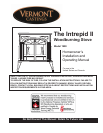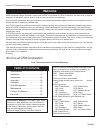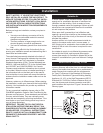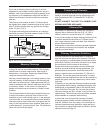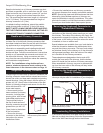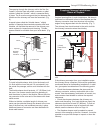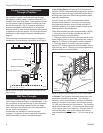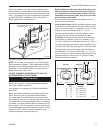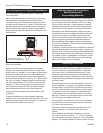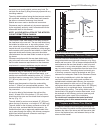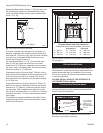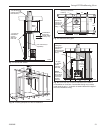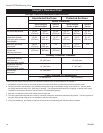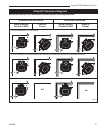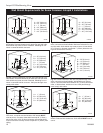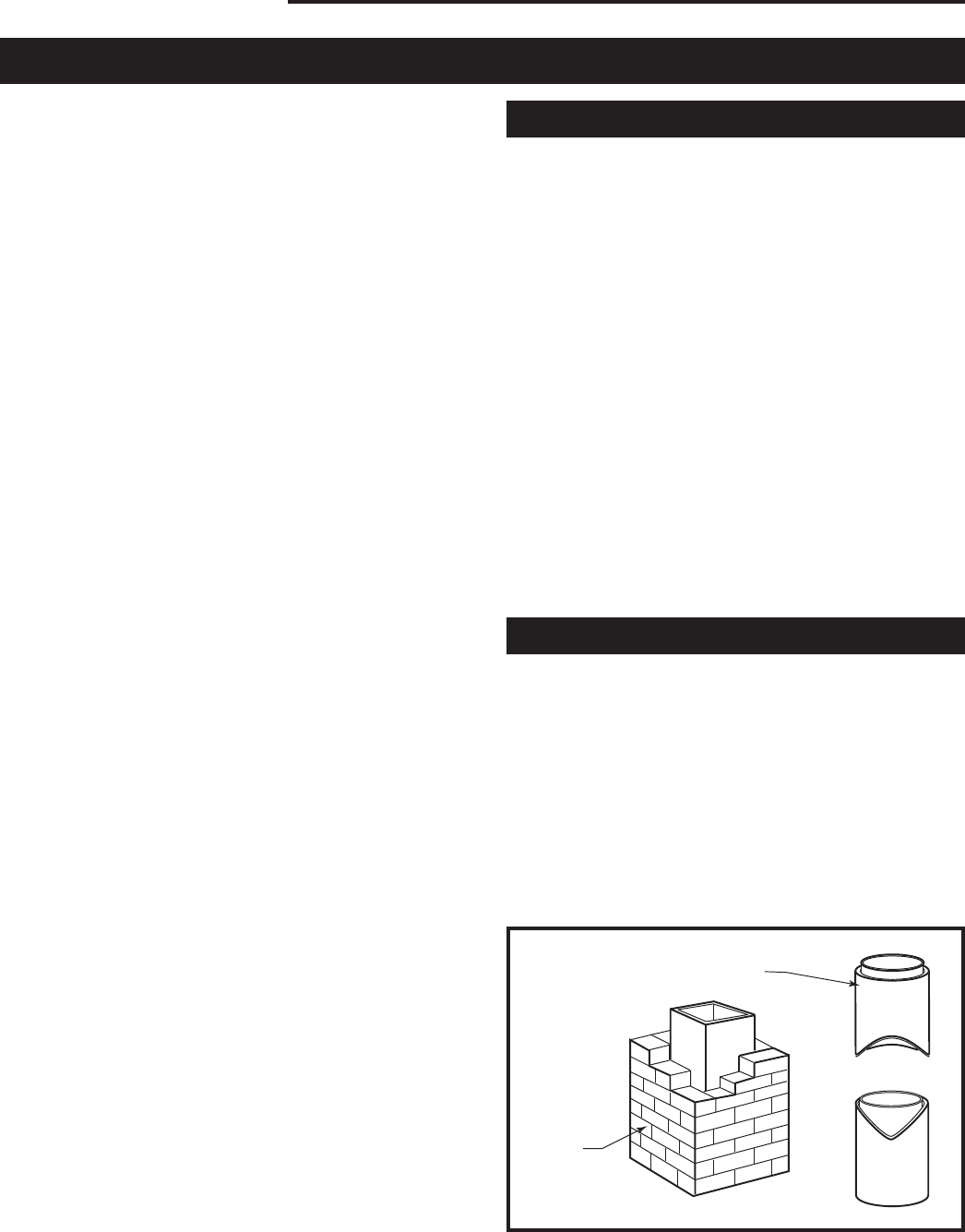
4
Intrepid II Woodburning Stove
2000966
Installation
SAFETY NOTICE: IF YOUR STOVE IS NOT PROP-
ERLY INSTALLED, A HOUSE FIRE MAY RESULT. TO
REDUCE THE RISK OF FIRE, FOLLOW THE INSTAL-
LATION INSTRUCTIONS. CONTACT LOCAL BUILD-
ING OR FIRE OFFICIALS ABOUT RESTRICTIONS
AND INSTALLATION INSPECTION REQUIREMENTS
IN YOUR AREA.
Before you begin an installation, review your plans to
see that:
• Your stove and chimney connector will be far
enough from combustible material to meet all
clearance requirements.
• The floor protector is large enough and is con-
structed properly to meet all requirements.
• You have all necessary permits from local author-
ities.
Your local building official is the final authority for ap-
proving your installation as safe and determining that it
meets local and state codes.
The metal label permanently attached to the back of
every Vermont Castings stove indicates the stove has
been tested to current ULC standards, by Canadian
Standards Association (CSA). The test standards are
ANSI/UL-1482 and ANSI/UL-737 for the United States
and ULCS627 and CAN/CSA-B366.2 for Canada.
Clearance and installation information also is printed
on the label. When the stove is installed according to
the information both on the label and in this manual,
local authorities in most cases will accept the label as
evidence that the installation meets codes and can be
approved.
However, codes vary in different areas. Before starting
the installation, review your plans with the local building
authority. You local dealer can provide any additional
information needed.
For any unresolved installation issues, refer to CSA
CAN-B365 Installation Code for Solid Fuel Burning Ap-
pliances and Equipment. These standards are the basis
for many national codes. They are nationally recog-
nized and are accepted by most local authorities. Your
local dealer or your local building official may have a
copy of these regulations.
IMPORTANT: FAILURE TO FOLLOW THESE IN-
STALLATION INSTRUCTIONS MAY RESULT IN A
DANGEROUS SITUATION, INCLUDING A CHIMNEY
OR HOUSE FIRE. FOLLOW ALL INSTRUCTIONS
EXACTLY, AND DO NOT ALLOW MAKESHIFT COM-
PROMISES TO ENDANGER PROPERTY AND PER-
SONAL SAFETY.
Outside Air
In some modern, super-insulated homes, there is not
enough air for combustion because of insufficient air
infiltration into the building. Such air enters a home
through unsealed cracks and openings. Kitchen or bath
exhaust fans can compete with the stove for available
air and compound the problem.
When poor draft is caused by a low infiltration rate,
opening a ground floor window on the windward side
of the house and in the vicinity of the stove will usually
alleviate the problem.
Another solution is to install a permanent outside air
supply to the stove and/or room. In some areas, in
fact, bringing air for combustion from outside the home
directly to the air inlet of the stove is required for new
construction.
An outside air supply is not affected by pressure varia
-
tions within the house, and improved stove perfor-
mance often results. An Outside Air Adaptor Kit for the
Intrepid II is available from your local Vermont Castings
dealer.
What Kind of Chimney to Use
Your Intrepid II must be connected to a code-approved
masonry chimney with a flue liner, to a relined masonry
chimney that meets local codes, or to a prefabricated
metal chimney that complies with the requirements
for Type HT chimneys in the Standard for Chimneys,
Factory-Built, Residential Type and Building Heating
Appliance, UL 103, or the High Temperature (650°C)
Standard ULC S-629 for Canada. Whatever kind you
use, the chimney and chimney connector must be in
good condition and kept clean. Figure 2 shows the two
chimney types.
ST241
chimney types
12/13/99 djt
A prefabricated
double-wall insu-
lated chimney
A tile-lined ma
-
sonry chimney
ST241
Fig. 2 Standard chimney types.



